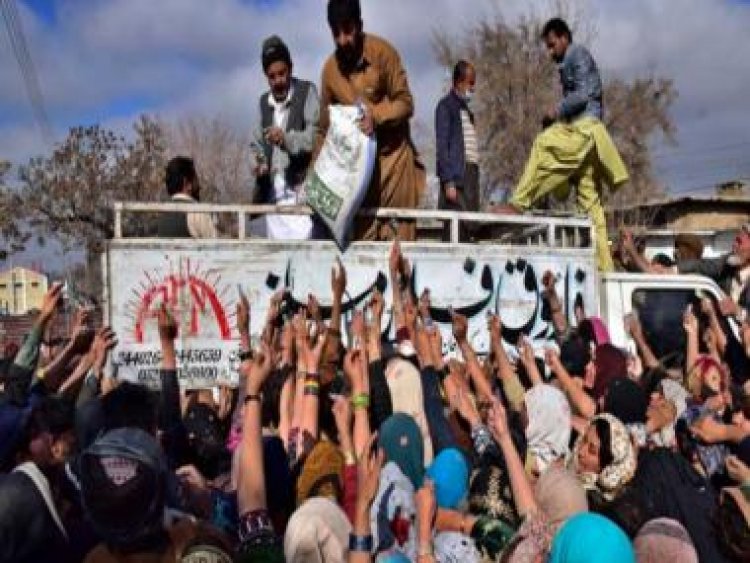Pakistan to hit highest ever inflation as govt admits monetary policy failure
Pakistan to hit highest ever inflation as govt admits monetary policy failure

Pakistan Economic Crisis: Even as Pakistan struggles with historically high levels of inflation, the government said that it may hit its highest-ever mark of 38% in April.
According to reports in the Pakistani media, the government of Pakistan has also admitted that the contractionary monetary policy of the country’s central bank has failed to control the ever-rising inflation rate.
While announcing its economic outlook for the month of April, Pakistan’s finance ministry said that the inflation rate was expected to be between 36% to 38%. This forecast is reportedly in accordance with market expectations and ground realities.
The highest-ever rate of inflation recorded in Pakistan was 37.8% which occurred in December 1973. The latest inflationary surge, which has had a negative impact on the bulk of the country’s population, however, may soon push it aside. The rate of inflation last month was 35.4%.
The report, which was created by the finance ministry’s Economic Adviser Wing, also acknowledged that the actions of the central bank were ineffective.
“Although the SBP (State Bank of Pakistan) is enacting contractionary monetary policy, inflationary expectations are not settling down,” the report read.
Failed fiscal policy hits Pakistan economy
In an effort to rein in the skyrocketing inflation, the SBP raised interest rates to a record 21%, but in doing so, it added a significant fiscal cost in the form of costlier debt payments. This has led to increased borrowing, which in turn has increased inflation.
The most recent report from the Pakistani finance ministry followed a previous one that acknowledged it would take time for inflation to come down to manageable levels. The government has predicted an average inflation rate of 20% for the upcoming fiscal year.
The consumer price index (CPI), which measures headline inflation, was likely to continue high in the upcoming months, the finance ministry reaffirmed. It further stated that the rise in food and energy prices were its main motivators.
It went on to say that the general price level had risen as a result of currency devaluation and increased administered rates. According to the ministry, despite a declining trend, global commodity prices are still higher than they were before the COVID-19 pandemic.
The supply of vital crops has not been able to keep up with domestic demand due to the tardy recovery from flood damage, which has increased inflation.
The International Monetary Fund (IMF) programme has been put on hold by the government, but the finance ministry claimed that if it were to be successfully implemented, it would open the door to more capital inflows, further exchange rate stabilisation, and reduced inflationary pressures.
The report also stated that Pakistan’s economy was still dealing with serious issues, including high inflation and a downturn in economic activity.
The average inflation rate for the current fiscal year is now predicted to stay at 28.5% by the proposed medium-term economic framework, while economic growth may decelerate to 0.8%. It anticipates some improvement in the state of the agricultural industry, especially access to inputs like seeds, loans, and fertilisers. According to the monthly report, 26.8 million metric tonnes of wheat were produced during the current fiscal year.
The national ministry of food security and research, however, said on Friday that there were 27.4 million tonnes of wheat produced. The food ministry predicted that 29 million metric tonnes of wheat would be available this year, including carryover inventories, but it omitted to mention the overall amount of consumption needed.
The temperature may continue to be slightly above average in most areas of the nation, according to the monthly report from the finance ministry. The melting of the snow in the northern regions will be accelerated by a steady rise in temperature.
While the lower regions of the country will experience a slight shortage during the Kharif season, the seasonal rainfall may be able to supply water for crops in the main rain-fed areas. However, because of the restrictive monetary and fiscal policies, the industrial sector will continue to be plagued.
Large industries’ output was anticipated to have grown in March compared to February due of the favourable seasonal influences. The year-over-year change in large-scale manufacturing may, however, nonetheless be slightly negative due to the high-base impact.
Due to rising inflation, high interest rates, fiscal consolidation, and lack of trust in economic agents, the trend in the Monthly Economic Indicator (MEI) during the first nine months of the current fiscal year remained unstable.
According to the finance ministry, it was anticipated that imports would rise slightly in April compared to March.
The government’s decision to lift some restrictions on pro-growth imports in order to boost domestic economic activity, it was stated, was the cause of this.
Read all the Latest News, Trending News, Cricket News, Bollywood News,
India News and Entertainment News here. Follow us on Facebook, Twitter and Instagram.
What's Your Reaction?



























































